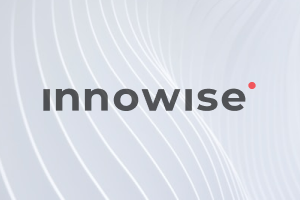Your message has been sent.
We’ll process your request and contact you back as soon as possible.
The form has been successfully submitted.
Please find further information in your mailbox.



Innowise implemented Odoo 17 Enterprise for IS Engineering as a single connected system for sales, purchasing, production, finance, service, HR, and reporting.
operations under one ERP
from production to finance

The client is IS Engineering Monforts Walzentechnik, a distinguished leader in precision roller brush technology. With over 60 years of innovation and craftsmanship, the company designs and hand-manufactures high-performance brush rollers tailored for industries such as glass, textiles, printing, food, wood processing, flooring, and steel. Known for engineering excellence and hands-on customer collaboration, Monforts guarantees every solution, whether a single prototype or a full production line, meets the most demanding industrial requirements.
We see Innowise as a trusted and highly skilled business partner who played a crucial role in the successful execution of our project. Their team demonstrated unmatched reliability, outstanding technical expertise, ensuring the migration and hyper-care phases were executed seamlessly, resulting in a swift and trouble-free Odoo implementation.


IS Engineering Monforts Walzentechnik had been building custom roller brushes for decades, but their internal processes hadn’t kept pace with the complexity of modern manufacturing. Every order was made to spec, which meant sales, purchasing, and production teams had to coordinate closely just to keep things moving. Quoting, lead times, and scheduling were handled in fragmented ways, creating friction and unnecessary pressure.
Shipping added its own complications. Each order required crate dimensions, weight, and pricing to be calculated using standard formulas. Doing this manually left room for inconsistencies, which often caused extra costs and delays.
Customer service processes were equally fragmented. A single complaint could involve ticket creation, inspection, potential returns, rework in production, and credit issuance. But without a central workflow, it was hard to track progress and resolve issues quickly.
Finance operations were under strain. Accounting lived in DATEV, while orders, delivery orders, and invoices were prepared manually in separate tools. That setup led to frequent errors: wrong tax rates, miscalculated prices, and missing documents. Inventory was not connected to finance, so stock levels were unreliable and costing suffered.
Data governance was another sticking point. Teams needed standardized product templates, predefined lists, and field-level access controls to reduce manual entry errors and keep critical data consistent across departments.
From a technical standpoint, the solution had to run on Odoo.sh with separate development, staging, and production environments to guarantee safe testing and smooth releases.
The system also needed to unify a broad set of applications (Sales, CRM, Purchase, Inventory, Manufacturing, Accounting, Quality, and Shop Floor) along with custom extensions like a crate calculator, a sales price calculator, and expected delivery date automation.
The manufacturing side had very specific requirements. The system needed to support accurate bills of materials, work order tracking, time logging, and shop floor-level performance stats. Quality checks had to be seamlessly integrated into the production flow. To prevent delays and material shortages, the solution also needed to enable automatic replenishment through a mix of reordering rules and make-to-order routes, without introducing new bottlenecks.
Our team started by defining what the new ERP needed to cover. The scope included core Odoo modules for sales, CRM, purchasing, inventory, manufacturing, accounting, quality control, shop floor, and maintenance, along with supporting tools like document management and barcoding. From day one, we also listed custom features the client needed, such as a crate calculator, a sales price calculator, expected delivery date automation, and search tools.
We agreed on a deployment setup using Odoo.sh with three environments: development, staging (UAT), and production. This structure gave us a safe way to test new features under conditions close to live before rolling them out.
To keep data reliable, the plan included standardized product templates, predefined lists, and role-based field visibility. Shipping crate dimensions, weight, and pricing were tied to fixed formulas so that every order would follow the same calculation rules.
Our experts built the solution on Odoo.sh with separate development, staging (UAT), and production environments. This setup lets the project team validate each release under conditions close to live before deploying to production.
The design connects core operations in one ecosystem. Sales and CRM drive quotations and Sales Orders. Inventory, Purchase, and Manufacturing handle BOMs, work orders, make-to-order routes, lead times, and reordering rules. On the shop floor, Quality, Maintenance, Barcodes, and Documents support traceability, execution, and record keeping.
To cover company-specific needs, our developers added extensions documented in the scope: a crate calculator, a sales price calculator, expected delivery date automation, and search tools.
For finance outputs, the team configured multi-language invoice templates with a QR code, and set up the monthly DATEV export and EBICS reconciliation flow as specified.
Data consistency runs through the design. Standardized product templates, predefined lists, and field-visibility rules keep records accurate and protect sensitive attributes, and the documented crate formulas ensure consistent dimensions, weights, and pricing.
Our team set up a sales process that ties together every step, from lead creation to invoicing. Leads become opportunities, then flow into quotations and confirmed sales orders. Engineers can attach drawings, track time, and configure brushes directly in the system. Each quotation triggers the right manufacturing or purchase orders, deliveries, and invoices automatically, which cuts out manual steps.
For distributors, the system automatically applies discount price lists. Agents can send mass mailings to selected leads or customers in just a few clicks. A customer record holds all interactions and documents in one place, so the sales team always has the full story at hand.
Custom extensions like the crate calculator, sales price calculator, and expected delivery date automation keep quotes consistent and accurate. Built-in search tools and email templates speed up daily work, so sales reps spend less time on paperwork and more time closing deals.
Our experts unified purchasing and inventory, so materials move smoothly without interruptions. Purchase orders now follow a clear path from RFQs and blanket orders to approvals, receipts, bills, and payments. Costs update automatically, which keeps procurement and accounting aligned.
The system handles reordering rules and makes-to-order routes. When stock runs low or a sales order arrives, draft POs are generated on time. Buyers can also send multiple RFQs to different vendors in one step, making it easy to compare offers and pick the best deal.
On the inventory side, every operation, like receipts, deliveries, internal transfers, returns, and adjustments, is covered. Automatic reminders help staff manage deadlines, while lot and serial numbers track each product with full traceability. Lead times are transparent at every stage, whether it’s vendor delivery, manufacturing preparation, or final shipment.
Predefined lists and templates reduce data entry mistakes and keep records consistent across purchasing and warehouse processes. Managers see everything in one place with dashboards and reports that combine costs, vendor performance, and stock movements.
Manufacturing was one of the project’s core priorities. Our team designed the flow around accurate bills of materials and structured manufacturing orders, ensuring each product follows a defined path from start to finish. Work orders now track every shop-floor operation, tied directly to components, quality checks, and validations.
Operators log time per operation, which gives managers precise insights into labor costs and production efficiency. The system automatically tracks performance signals such as returned operations, delays, and slowdowns, providing leadership with a real-time view of productivity and bottlenecks.
Dashboards pull all of this together. From a single screen, supervisors can see which orders are on track, which work centers are running slow, and where resources need to shift. That visibility makes planning sharper and keeps production running without costly surprises.
Customer service was another area where IS Engineering needed more structure. Our team set up a complaint process inside Odoo, from ticket creation to inspection, assessment, brush return, and credit note issuance. Every step now runs in one system, cutting delays and keeping full traceability for each case.
When an issue requires production support, the workflow links directly to manufacturing orders. That way, replacement brushes or repaired parts can be produced and delivered without manual back-and-forth between teams.
For outsourced service partners, the system generates vendor bills and tracks payments automatically, cutting admin work and ensuring costs are recorded accurately.
On top of that, every complaint and service interaction is logged in a dedicated record. Managers can see how many cases were raised, how quickly they were resolved, and what patterns emerge across products or customers. This visibility helps them target root causes instead of firefighting issues one by one.
Managing products at ISE goes beyond simple item lists. Brushes, components, crates, and services each carry their own logic, so we set up dedicated templates that capture every detail up front.
All categories feed into real-time statistics. Sales, purchases, manufacturing volumes, stock levels, and forecasts are visible at a glance, giving managers both detailed and big-picture insights to guide decisions.
Our experts extended Odoo with a full HR module, giving ISE structured, centralized control over its workforce.
The result is a single source of truth for HR, accurate payroll processing, and full workforce visibility, seamlessly integrated with the same ERP platform that drives ISE’s operations.
Our experts configured Odoo to simplify daily accounting tasks and ensure compliance. Invoices run in multiple languages and use tailored templates with QR codes for quick, error-free payments. Each record captures issuer, recipient, delivery details, tax IDs, and payment terms, creating a clean audit trail.
For compliance and automation, the system connects directly with DATEV and EBICS.. A monthly DATEV export delivers accounting entries, customer, supplier, and employee data in the exact format tax software requires. EBICS securely imports bank statements and reconciles them against Odoo records automatically, saving time and reducing errors.
Odoo now manages ISE’s full asset lifecycle. Each record includes acquisition value, depreciation method, accounts, residual value, and custodian details linked directly to employee records, providing full accountability.
Payment reminder flows keep receivables on schedule, reducing manual follow-ups. To protect historical accuracy, decades of financial data, including customers, suppliers, inventory, products, BOMs, and orders, were migrated into Odoo’s database with validation checks to ensure consistency.
We set up the project on Odoo.sh with three environments: development, staging, and production. Developers worked in a sandbox, while staging mirrored production for user acceptance testing. This setup kept experiments separate, made testing safe, and lowered the risk of problems at go-live.
The rollout followed agile cycles. Each cycle focused on one goal, such as sales flows, crate calculations, finance exports, or manufacturing tracking. At the end of every cycle, we demoed results in staging, gathered feedback, and refined features before moving them into production.
After launch, our team provided a hyper-care phase with dedicated support to resolve issues fast. Once the system stabilized, we moved into ongoing maintenance and optimization so IS Engineering could keep improving its processes without interruptions.
Our focus was to give IS Engineering one system they could rely on from sales to the shop floor. We built it with clear workflows, real-time tracking, finance integrations, and automated work operations to optimize their processes. We also provide ongoing support as new modules are introduced, including accounting, time off, and attendance.


The new Odoo system now runs IS Engineering’s operations end to end, from sales to finance, in one unified platform. Teams no longer switch between spreadsheets, legacy tools, and manual calculations, as every process is connected and consistent.
Sales cycles are faster and more reliable. Quotations pull directly from the crate and pricing calculators, and delivery dates are generated automatically. Orders flow into manufacturing with linked work orders, time tracking, and quality checks, providing accuracy and traceability.
Finance runs with the same precision. Monthly DATEV exports and EBICS reconciliation ensure compliance and reduce accounting effort. Managers see real-time data on sales, costs, and manufacturing performance in dashboards, so decisions happen quickly and are based on facts.
By synchronizing data and standardizing workflows across departments, IS Engineering has cut administrative overhead and gained a platform that supports growth without adding complexity.
Your message has been sent.
We’ll process your request and contact you back as soon as possible.

By signing up you agree to our Privacy Policy, including the use of cookies and transfer of your personal information.